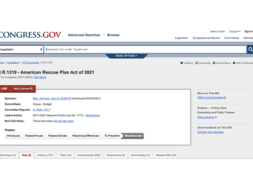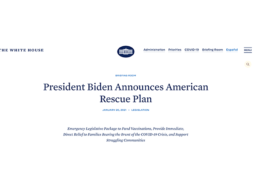
Knowing Your Responsibility as a Plan Sponsor
By Robert J. Behr, CPA, Senior Manager, McClintock & Associates, PC
U.S. Department of Education, Accrediting Bodies, Consumer Financial Protection Bureau, and the Internal Revenue Service are just some of the regulatory bodies to which a post-secondary institution must maintain compliance. One organization which doesn’t always make our “top ten list of discussion list” is the U.S. Department of Labor (DOL). However, the DOL regulations are critically important, and this article will focus on their regulations as related to employee retirement plans. Many institutions in the education sector offer defined contribution retirement plans for their employees. Whether it is a 401(k) plan (for-profit entity) or a 403(b) plan (not-for-profit entity) the rules and regulations for these types of plans are very similar. Just like schools are concerned with the Department of Education’s (ED) rules and regulations, program reviews, etc., they need to be equally concerned with the compliance requirements for operating their retirement plan. The rules and regulations for retirement plans fall under the Employee Retirement Income Security Act of 1974 (ERISA) guidelines which are governed by the DOL. It is important that schools are aware of their responsibilities as the retirement plan sponsor and the specific regulatory requirements of the DOL. The DOL has the authority to audit your retirement plan. A DOL audit could be as costly as an ED audit due to the amount of time, effort, and resources that may need to be devoted to the audit process.
In order to avoid an untimely visit from the DOL or IRS, it is important for plan sponsors to understand the fiduciary responsibilities to their employees and basic terms of the plan as outlined in their plan document.
The administrative tasks that are necessary to manage your plan correctly can be overwhelming. Based upon our auditing of retirement plans, the following are key points plan sponsors and administrators need to oversee and review to minimize the risk of DOL audits, fines and penalties.
Understanding the plan document
Plan sponsors (employers) typically adopt a “proto-type” plan that has been pre-approved under the Internal Revenue Code (IRC). The proto-type plan enables the sponsor to configure the plan based on the preferences of the organization. Some of the key features determined by plan sponsors are: (1) When are employees eligible to participate in the plan, (2) Types and amounts of allowable employee contributions, (3) How much will the plan sponsor contribute and how will it be allocated among participants, (4) Vesting period for participants, (5) How and when benefits are paid. Setting up the plan document is a relatively simple task. However, monitoring and ensuring that terms of the plan are being followed can be challenging.
Some of the more common errors that plan sponsors make administering their plan consist of:
- The plan definition of eligible compensation is not correctly followed. Eligible compensation is not the same for every plan. It is determined by the plan sponsor and may include or exclude items such as overtime, sick, vacation, severance, bonus and other types of compensation. This can result in participant elective deferrals and employer matching contributions being miscalculated.
- Employer contributions are not made to all eligible employees. It is imperative that all participants are treated equally and fairly in accordance with the plan document as ERISA has required nondiscrimination testing.
- Participant elective deferrals are not handled correctly. While it is up to the participant to select the percentage of their salary to contribute to the plan, it is the plan sponsor’s responsibility to ensure the amount is calculated correctly, withheld and deposited into the plan timely.
- Eligible participants are not given the opportunity to participate in the plan. You need to make sure that you have a process in place to enroll your employees once they meet the eligibility requirements.
- Employee loans are not paid in accordance with plan rules. Generally, an employee loan is secured by their vested interest in the plan. The amount that the plan may loan an employee is limited by certain rules under the IRC.
- Vesting periods are misinterpreted. It is important to understand how this is calculated if your plan offers an employer contribution. Vesting is a percentage typically based on years of service. If the percentage calculated is incorrect, it may impact the amount an employee can borrow from the plan or the amount of money paid in distributions when an employee terminates from the plan.
- Distributions are not calculated or paid correctly. The incorrect calculation of an employee’s distribution can certainly be impacted by the misinterpretation of the vesting period. Also, when an employee requests a distribution, a determination must be made on whether federal income taxes are required to be withheld from the distribution, and if required, how much should be withheld. Distributions of pre-tax employee deferrals and employer contributions from a 401(k) or 403(b) plan are subject to federal income taxes unless the distributions are rolled over into another qualified retirement plan or traditional IRA within 60 days of the date of the distribution.
- Hardship distributions did not meet the plan requirements. If the plan provides for hardship distributions, it must provide the specific criteria used to make the determination of hardship. Thus, for example, a plan may provide that a distribution can be made only for medical or funeral expenses, but not for the purchase of a principal residence or for payment of tuition and education expenses.
- Forfeitures are not used appropriately. Forfeitures generally exist in plans with vesting periods. If a participant terminates employment before being fully vested, then the non-vested portion of the terminated participant’s account balance remains in the Plan and is called a forfeiture. As determined by the plan document, forfeitures are typically used to pay administrative expenses and/or reduce employer contributions to the plan.
These errors can be avoided by performing an annual review to determine if the terms of the plan document are being followed and by timely communicating to all relevant parties any changes made to the plan document. It should be noted that the plan document will need to be updated occasionally to comply with recent changes in the law. The IRS generally establishes a deadline to adopt plan amendments that reflect tax law changes. By understanding your plan document and communicating changes timely and accurately to the plan service providers, you can reduce the risk of triggering an audit by the DOL.
Managing service providers
While most plan sponsors typically rely heavily on various service providers (third-party administrators, recordkeepers, trustees/custodians, investment advisors and payroll administrators), it is ultimately the plan sponsor’s responsibility to ensure their plan is operating correctly. Therefore, you should make sure you fully understand the services that are covered in your service agreements. You should manage the service providers accordingly since they are involved in the daily functions of the plan such as allocations of contributions, investment activity within participant accounts, processing loans and distributions, and annual plan compliance.
It is important that all parties involved understand the plan document. This is particularly important if there have been amendments to the plan or changes of the third-party service providers.
Mistakes can occur when instructions from participants are not followed correctly. Mismanagement of participant requests, such as requests to change the deferral percentage, can also result in errors. In order to avoid an audit by the DOL, mistakes resulting from mismanagement should be identified timely and corrected.
Communicating with payroll and human resources departments
Frequent communication between the payroll and human resources departments will help ensure that the information provided to the applicable service providers is accurate and remitted timely. Key information and source documents generated from these departments consist of: new and terminated employees, accurate payroll compensation for each participant, census data for determining plan eligibility and benefits, plan terms for defining employee contributions, distributions and loans and any plan amendments or changes to the plan relating to the definition of eligible compensation, hardship withdrawal provisions, loan provisions and contribution allocation formulas. If this information is not accurate, it will cause the plan to be in non-compliance. One of the more common errors resulting from the lack of communication between the payroll department, payroll provider and third-party administrator is the untimely depositing of employee elective deferrals. The employer is the one responsible for contributing the employee elective deferrals to the plan trust. DOL rules and regulations require that the employer deposit deferrals as soon as administratively feasible. However, under no circumstance can the deposit be later than the 15th business day of the following month. If deposits are not made timely by the employer, the failure can result in a prohibited transaction, which is a transaction prohibited by law between the plan and a disqualified person such as an employer. Also, the plan sponsor may have to remit lost earnings into the plan based on the numbers of days the deposit is late. A school should coordinate with its payroll provider (if applicable) to determine the number of days that the employee elective deferrals can be reasonably segregated from the cash account to be certain it is in compliance with the DOL requirements. By setting up procedures to ensure that deposits are made timely, late contributions can be avoided and the risk of being audited can be lessened.
Performing internal recordkeeping and review
Establishing on-going internal procedures should help mitigate any significant plan errors or audit findings. Some things to consider would be to review the monthly service provider reports for contributions and distributions to verify that these transactions agree to your internal records. For participant loans, verify that the loans were made in accordance with the terms outlined in the plan document, participant account balances were adequate to support the loan request, loan repayments were remitted timely and if not, report any default loans to the service provider. If there are any hardship withdrawals, make sure you keep documents on file to support it.
If your plan is required to have an annual audit, you should hire an auditor that has experience with retirement plan audits and is knowledgeable of the DOL rules and regulations.
In recent years, the DOL has been focusing its efforts on improving the audit quality of employee benefit plans, resulting in the DOL doing a study and concluding that 40 percent of the audits reviewed contained major deficiencies. As a plan sponsor, you have a responsibility to ensure that not only the plan is operating in accordance with the regulations but is also being audited by an independent qualified public accountant. Lastly, plan sponsors should know the requirements of filing an annual Form 5500 with the IRS. It is the plan administrator’s responsibility to ensure that the return is filed timely. If Form 5500 is not filed, the IRS or DOL can assess a penalty for late filing which can be substantial. The IRS penalty is $25 per day up to a maximum of $15,000. The DOL penalty has no maximum and can be up to $1,100 per day. Schools should understand their filing requirements and never assume that a third-party service provider is taking care of filing Form 5500 on their behalf.
Conclusion
As the plan sponsor, you are responsible for keeping your retirement plan in compliance with ERISA and the DOL regulations. Keeping up with the rules of the IRS, ERISA, and the DOL can be challenging. By understanding the plan document, managing and communicating with all parties involved, and reviewing your plan annually to make sure it is operating in accordance to its terms and the law, you can reduce errors made as part of administering the plan which in turn will reduce the risk of a costly DOL audit or DOL fines/penalties.
MR. BEHR is a Certified Public Accountant who has 25 years of experience providing a full range of client service and consulting services in the public sector to postsecondary schools which include financial statement audits, employee benefit plan audits, agreed-upon- procedure attestation engagements for regulatory requirements, 90/10 calculation reviews, composite score projections and planning, financial statement reporting consulting and understanding of new accounting requirements, transaction services for buyer/sellers, internal control processes and procedures, and coordination with Tax Department on tax savings and opportunities. He oversees the employee benefit plan practice at McClintock & Associates.
Contact Information: Robert J. Behr, CPA // Senior Manager // McClintock & Associates, P.C. // 412-257-5980 // rbehr@mcclintockcpa.com // Social media: www.linkedin.com/in/rob-behr-19441468











